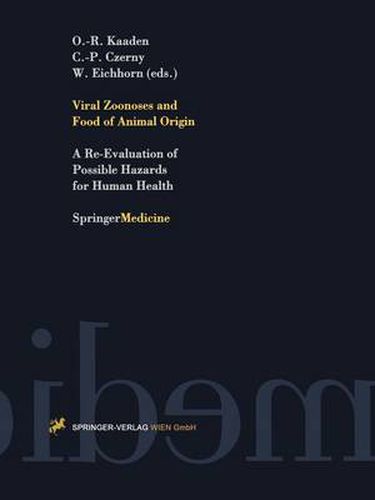Readings Newsletter
Become a Readings Member to make your shopping experience even easier.
Sign in or sign up for free!
You’re not far away from qualifying for FREE standard shipping within Australia
You’ve qualified for FREE standard shipping within Australia
The cart is loading…






This title is printed to order. This book may have been self-published. If so, we cannot guarantee the quality of the content. In the main most books will have gone through the editing process however some may not. We therefore suggest that you be aware of this before ordering this book. If in doubt check either the author or publisher’s details as we are unable to accept any returns unless they are faulty. Please contact us if you have any questions.
Since the central theme of this book is the transmission of disease agents through the food chain, we will examine influenza viruses from this perspective. Influenza A viruses are found in humans, pigs, horses, sea mammals, and also in wild aquatic and domestic birds [23]. How are they spread? Between mammals, influenza is an airborne infection, but between birds, influenza can be either an airborne or waterborne infection. Influenza viruses of aquatic birds periodically transmit to domestic birds sometimes with catastrophic effects; this transmis sion can be either airborne or waterborne. Less frequently, avian influenza viruses transmit to mammals and three to four times in the past century this transmission has initiated a pandemic of influenza in humans. The method of spread of avian influenza viruses to mammals remains unresolved, but could be either airborne or waterborne. In this report we will consider recent examples of interspecies transmission of influenza A viruses and the possible prevention of emergence of the next human pandemic which is considered imminent. The reservoirs of influenza A viruses The available evidence indicates that aquatic birds are the reservoirs of all 15 subtypes of influenza A viruses. We will first consider the replication of influenza A in aquatic birds. In wild ducks, influenza viruses replicate preferentially in the cells lining the intestinal tract, cause no disease signs, and 8 7 are excreted in high concentrations in the feces (up to 10 .
$9.00 standard shipping within Australia
FREE standard shipping within Australia for orders over $100.00
Express & International shipping calculated at checkout
Stock availability can be subject to change without notice. We recommend calling the shop or contacting our online team to check availability of low stock items. Please see our Shopping Online page for more details.
This title is printed to order. This book may have been self-published. If so, we cannot guarantee the quality of the content. In the main most books will have gone through the editing process however some may not. We therefore suggest that you be aware of this before ordering this book. If in doubt check either the author or publisher’s details as we are unable to accept any returns unless they are faulty. Please contact us if you have any questions.
Since the central theme of this book is the transmission of disease agents through the food chain, we will examine influenza viruses from this perspective. Influenza A viruses are found in humans, pigs, horses, sea mammals, and also in wild aquatic and domestic birds [23]. How are they spread? Between mammals, influenza is an airborne infection, but between birds, influenza can be either an airborne or waterborne infection. Influenza viruses of aquatic birds periodically transmit to domestic birds sometimes with catastrophic effects; this transmis sion can be either airborne or waterborne. Less frequently, avian influenza viruses transmit to mammals and three to four times in the past century this transmission has initiated a pandemic of influenza in humans. The method of spread of avian influenza viruses to mammals remains unresolved, but could be either airborne or waterborne. In this report we will consider recent examples of interspecies transmission of influenza A viruses and the possible prevention of emergence of the next human pandemic which is considered imminent. The reservoirs of influenza A viruses The available evidence indicates that aquatic birds are the reservoirs of all 15 subtypes of influenza A viruses. We will first consider the replication of influenza A in aquatic birds. In wild ducks, influenza viruses replicate preferentially in the cells lining the intestinal tract, cause no disease signs, and 8 7 are excreted in high concentrations in the feces (up to 10 .